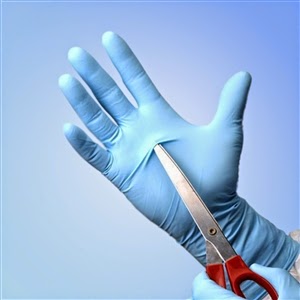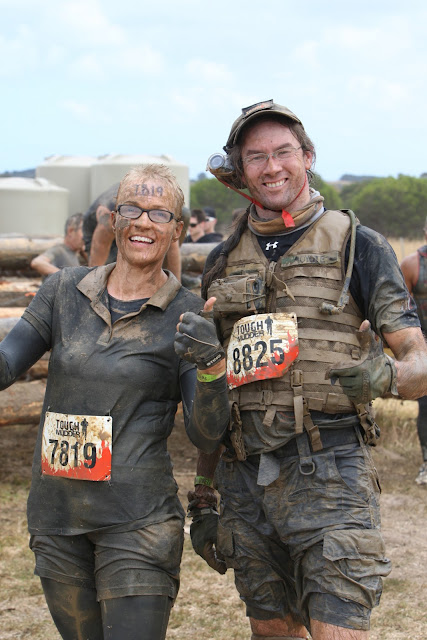 I was lucky enough to be taken up to the snow for my 40th birthday not long ago, by my mum, who kindly took my whole family up for a long weekend at the Falls Creek snow resort in the Victorian Alps. Snow, in Australia? Yes, it snows here. Sometimes, in a few places. When we went there was a base-cover of around 80cm and it was forecast to be between -3oC and -6oC, with 24cm sow expected each night, or thereabouts.
I was lucky enough to be taken up to the snow for my 40th birthday not long ago, by my mum, who kindly took my whole family up for a long weekend at the Falls Creek snow resort in the Victorian Alps. Snow, in Australia? Yes, it snows here. Sometimes, in a few places. When we went there was a base-cover of around 80cm and it was forecast to be between -3oC and -6oC, with 24cm sow expected each night, or thereabouts. It was a 5 hour drive, including an hour on the shuttle-bus, as we didn't want to go through the hassle of snow-chains and on-mountain parking, as well as windy, icy mountain roads. Leave it to the professionals, I say, and have a nap on the way.
That said, when we arrive mountain-side, it was sleeting pretty heavily, and continued to do so for the majority of the day. We lost a bunch of snow cover and everybody got damp. Some more than others. That's kind of what I wanted to cover in this post. What I wore to stay warm and dry. What gear I took.
 Now, I cheated to some extent in that I hired ski-boots, and the outer-layer jacket and ski-pants for when we actually went skiing, (my first time in 20 years, since I lived in Calgary, Canada).
Now, I cheated to some extent in that I hired ski-boots, and the outer-layer jacket and ski-pants for when we actually went skiing, (my first time in 20 years, since I lived in Calgary, Canada).However, I also packed accordingly, for the times I wasn't skiing, and I'm glad I did.
I've had quite some experience in cold climates, both Canada, the UK, Danmark, as well as holidaying and I know they key elements to not having a bad time are to stay dry and warm. Not always both, but if you are one, or the other, you can usually get by. Cold AND wet? You're going to have a bad time.
Here's my layered approach to a trip to the snow:
I wore as my base-layer, the Platatac fleece leggings, and DriFire long sleeve shirt. I don't have any fancy socks, but tend to get hefty heavy-duty socks from the supermarket and wear them to death These ones are Kirkland's,, from Costco. nothing special, but long lasting and don't get stinky.

I wore my Danner Striker ii GTX combat boots, which could do with a thorough polishing, but I hit them with a liberal coating of Kiwi boot waterproofing spray and they worked a treat, even when I stepped through slush up past the ankle. Be sure to open the laces right up if you're waterproofing boots, and get in around the tongue to ensure you don't miss any leakage points.
I looped the leggings foot-hole stirrups over my socks, so they didn't ride up, and I had full coverage from toe to belly-button. Tucking my shirt into the elastic waist of the leggings then carried that all the way up to my neck. No cold draughts.
For my outer layer, I took my snow-proven Propper Adventure Tech shell outer pants, which offer a wind and water proofing layer that I really appreciate. They don't have a lot of pocket real-estate, but I made do, and didn't either loose anything, or lack anything on my adventures.

Over the DriFire shirts, I wore the lightweight Propper windcheater which provided me a really good lightweight dry-layer, as well as having a good neck-seal. My one was a bit too shirt, so my super-long arms tended to poke out, but I had a plan for that anyway.
As my outermost top layer, I chose my Baubax multi-function jacket, which is a semi-hard shell with a hood and thumb-hole fitted wrist extensions. I'll be covering this in detail some time soon. It held the sleet off really well, although the cuffs and the wrist extensions got pretty sodden. They could do with a dose of waterproofing spray as well, I think.
As far as outer layers went, it was a spot on combination for what I was expecting, although had I wanted to stay even dryer, I should have packed my Hazard4 Poncho Villa but I erred on the side of less gear. I should have left out my spare 90's era snow-pants I got when we moved to Calgary, but I'll pack it next time.
For head and hands, I wore my Peruvian fleece caps, along with one or two Headsox to keep my neck, mouth and ears warm. I wore my dual layer, long wristed Condor Nomex gloves which I also gave a liberal waterproofing. That can of spray was an excellent addition and I can't recommend them enough. I think I shall trial a few different ones soon.
 I wore a skiing helmet, to which I mounted my Contour Cam in its waterproof case. I gave the misty fogging Arena Flakjack goggles, with a smoky lens fitted, which remained mostly useable when I was skiing, but I needed to keep taking them off and wiping them off. The goggles really helped me have a clear and wind-free view of where I was going at upwards of 40kph downhill, who knew? I didn't hit ANYTHING this time. (I killed two aspen saplings at least, when living in Calgary).
I wore a skiing helmet, to which I mounted my Contour Cam in its waterproof case. I gave the misty fogging Arena Flakjack goggles, with a smoky lens fitted, which remained mostly useable when I was skiing, but I needed to keep taking them off and wiping them off. The goggles really helped me have a clear and wind-free view of where I was going at upwards of 40kph downhill, who knew? I didn't hit ANYTHING this time. (I killed two aspen saplings at least, when living in Calgary).I wore my Platatac Bravo hydration pack, with a 3L Source WXP bladder in it. I have a Blackhawk Side Plate carrier mounted to the bottom of my Bravo, as its hook-and-loop top makes it an excellent flat-pack pocket.
All in all, I was really pleased with my loadout, but most of all, I can't go without saying that my favourite bit of cold-weather kit was the SORD StormTrooper belt-fitted muff. Not only did it's pockets keep my needfuls (like my Manta emergency strobe, CLIF bars, and the like), they also were a place for me to stuff my gloves, and also just plain keep my hands warm. Warms hands mean good-times.
































